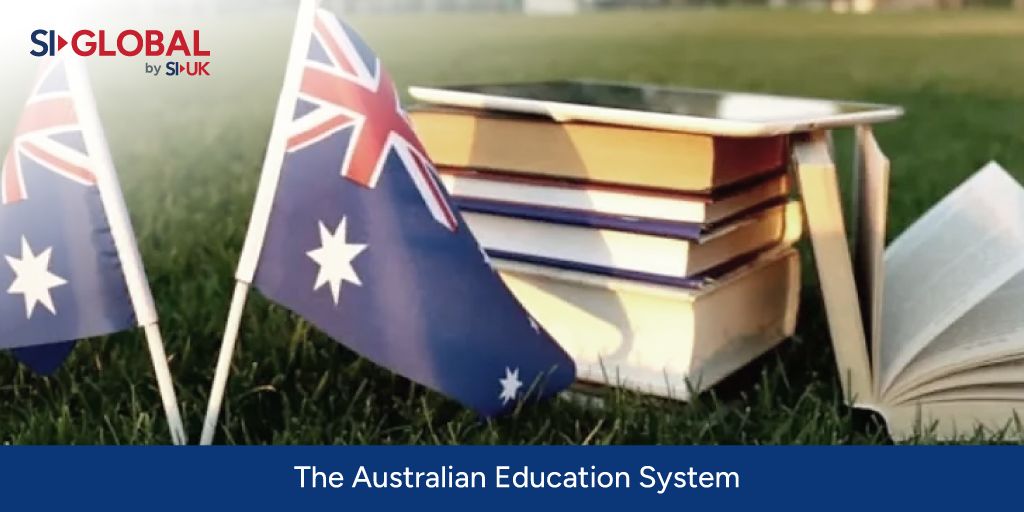The Australian Education System is known for its high-quality and comprehensive education structure. It is divided into several levels, each having its own characteristics and focusing on critical thinking, creativity, communication and ethical understanding.
The Australian government regulates education in Australia through various agencies, like the Australian Curriculum, Assessment, and Reporting Authority (ACARA) and the Tertiary Education Quality and Standards Agency (TEQSA), to ensure that quality and standards are maintained. Here is an overview of the education system:
- Early/preschool childhood education starts at the age of 5 or 6. It is mandatory, though, but is highly recommended. Pre-school education focuses on early socialization and basic learning skills.
- Primary and Secondary education is compulsory for all students. The education system has a well-structured curriculum that includes subjects like English, Mathematics, Science, and Social Studies. The curriculum aims to provide equal knowledge and skills to every learner.
- Tertiary education involves universities, vocational education and training (VET Institutions), and technical and further education (TAFE) colleges. The education system offers diverse choices and options across every discipline for higher education. In addition, the universities in Australia aim to provide students with the desired knowledge, attitude, skills, and reflective capabilities, which will help them secure their future contributing to society.

Australian Qualifications Framework (AQF)
The Australian Qualifications Framework is the national policy introduced by the Australian Government to regulate training and educational qualifications in the country in 1995. It aims to incorporate capabilities from each education and training sector to form a comprehensive national qualifications framework.
Study Levels in Australia
The main objective of Australian Levels in Australia is to establish pathways to formal education. The national policy includes ten levels of education, which are as follows -
|
Levels |
Qualifications |
|
Level 1 |
Certificate I |
|
Level 2 |
Certificate II |
|
Level 3 |
Certificate III |
|
Level 4 |
Certificate IV |
|
Level 5 |
Diploma |
|
Level 6 |
Advanced Diploma, Associate Degree |
|
Level 7 |
Bachelor Degree |
|
Level 8 |
Bachelor's Honors Degree, Graduate Certificate, and Graduate Diploma |
|
Level 9 |
Master’s Degree |
|
Level 10 |
Doctoral Degree |
AQF comprises three main categories, which refer to primary, secondary, and tertiary education. The primary and secondary education represents school education. At the same time, tertiary education means postsecondary education, which includes higher (university level) and vocational training and education.
School Education in Australia
|
Primary School |
Kindergarten (year 6 to 7) |
|
Secondary school |
Schooling year (years 7 to 10) |
|
Senior Secondary School |
Final two years of education (class 11th and 12th) |
Vocational Education and Training in Australia
Vocational education and training in Australia is a study that crafts you to obtain a specific skill or knowledge in various fields and careers. It can be an ideal career choice for international students who want to pursue practical and industry-based skills.
VET Courses in Australia are offered by privately registered training organizations (RTO), community education centres, and TAFE institutions that the government finances. VET certifications range across four levels: certificate I, II, III, and IV, along with diploma and advanced diploma programs.
Technical and Further Education (TAFE)
TAFE Institutes are government-funded colleges offering courses in vocational learning. The colleges offer programs similar to VET, focusing on practical and job-oriented training. Some of the TAFE institutions in Australia are associated mainly with reputed universities, enabling them to certify students with bachelor’s degrees on completion of the course.
Higher Education in Australia
Higher education in Australia comprises bachelor’s, master’s, and doctoral programs in various specializations. It refers to the tertiary education. There are over 41 universities in the country, some ranking in the top globally, and they attract many international students to pursue their higher education.
Group of Eight (Go8)
The Group of Eight includes Australia’s most research-intensive universities. It influences growth, delivers long-term, sustainable national higher education and research policies, and creates elite international alliances and research partnerships. According to the Times Higher Education World University Rankings 2024, six of Australia’s universities ranked in the top 100.
These universities include:
- The University of Melbourne
- The Australian National University
- The University of Sydney
- The University of Queensland
- The University of Western Australia
- The University of Adelaide
- Monash University
- UNSW University
Public Universities
The government funds these universities. It includes universities that specialize in research and regional universities. The quality of education and assisted facilities provided are top-notch. Some of the top-ranking public universities in Australia include:
Private Universities
Australian Private Universities offer various short-term courses in different streams. There are three private universities:
Pathway Programs
Pathway Programs are an integral part of the Australian Education System that allows flexibility for students to study at the best institutions. The pathway programs are designed to offer academic knowledge and English language skills to meet the entry requirements of a university.
For example, suppose someone has completed the 12th class in India and wants to pursue a career in Australia but doesn’t meet the requirements for a desired qualification. In that case, they can opt for pathway programs, such as a diploma in the related stream, and eventually advance to the second year of a bachelor’s degree in their desired course of study.
Postgraduate Study
A postgraduate study is a degree or qualification taken after an undergraduate course/program. It is a higher degree that includes master’s and doctoral degrees. A student can do postgraduate in various fields, like business and management, healthcare, hospitality, science, arts, etc.
A master’s degree has three formats - master’s degree (coursework), master’s degree (research), and master’s degree (extended). On the other hand, a doctoral degree has two formats - a research doctorate (PhD) and a professional doctorate.
Fee Structure
The average fee structure for international students ranges from $20,000 to $30,000 per year. However, it may depend on the course type, duration, and other factors. To know more about the cost of living in Australia, speak to an SI-Australia consultant.
Academic Intakes
Australia offers two significant annual intakes- February/March and July/August. However, some universities provide admissions in November or December. The February intake is the most popular for international students as it opens various courses and programs.
English Language Training
Since Australia is an English-speaking country, all the instructions are in English. Therefore, it’s essential to stay proficient in the language. If you lack proficiency, you can enrol in an English language course before starting a program. Australia owns over 1,000 private training centres.
Facts About Australian Higher Education
Australia is famous for its higher education. Here are some facts and figures about the country that will help you understand the Australian Education System for International Students much better:
- According to a survey by the Department of Education, 90% of the students are satisfied with the standard of Australian education and their living experiences
- The proportion of male and female students is equal in most Australian universities
- Australia is the third most popular study-abroad destination after the United States of America and the United Kingdom.
- The approximate density of full-time international students is 70.4%
- Australia ranks 7th with the best education, with an education index of 0.92
- 90% of the graduates get employed after finishing their degree in Australia
The Australian Education System strives to provide its students with the best education. It ensures that every student gains skills and knowledge in their career choices. The government constantly runs through the policies and regulations to provide its students with the maximum benefits of STEM skills.
Study in Australia
If you want to study in Australia, contact us today for a free consultation on your future.
FAQ
What is so special about the Australian Education System?
The best thing about the Australian Education System is that it allows students to enrol in vocational courses and training programs that let them skip university education and directly opt for job opportunities. The courses are skillfully designed to get hands-on practical experience.
How many levels are there in the Australian Education system?
The Australian Qualifications Framework (AQF) regulates training and educational qualifications in the Australian Education System. It includes three levels of education- primary, secondary, and tertiary. However, the tertiary level is categorized into ten groups ranging from certificate to master’s degree.
Why Australia is better for education?
What makes Australia stand out from other countries in education is the quality of learning they provide. The schools, colleges, and universities mainly focus on practical learning with a sense of creativity and overall development in personality. Besides that, it is home to six of the world’s top 100 universities.
















































































